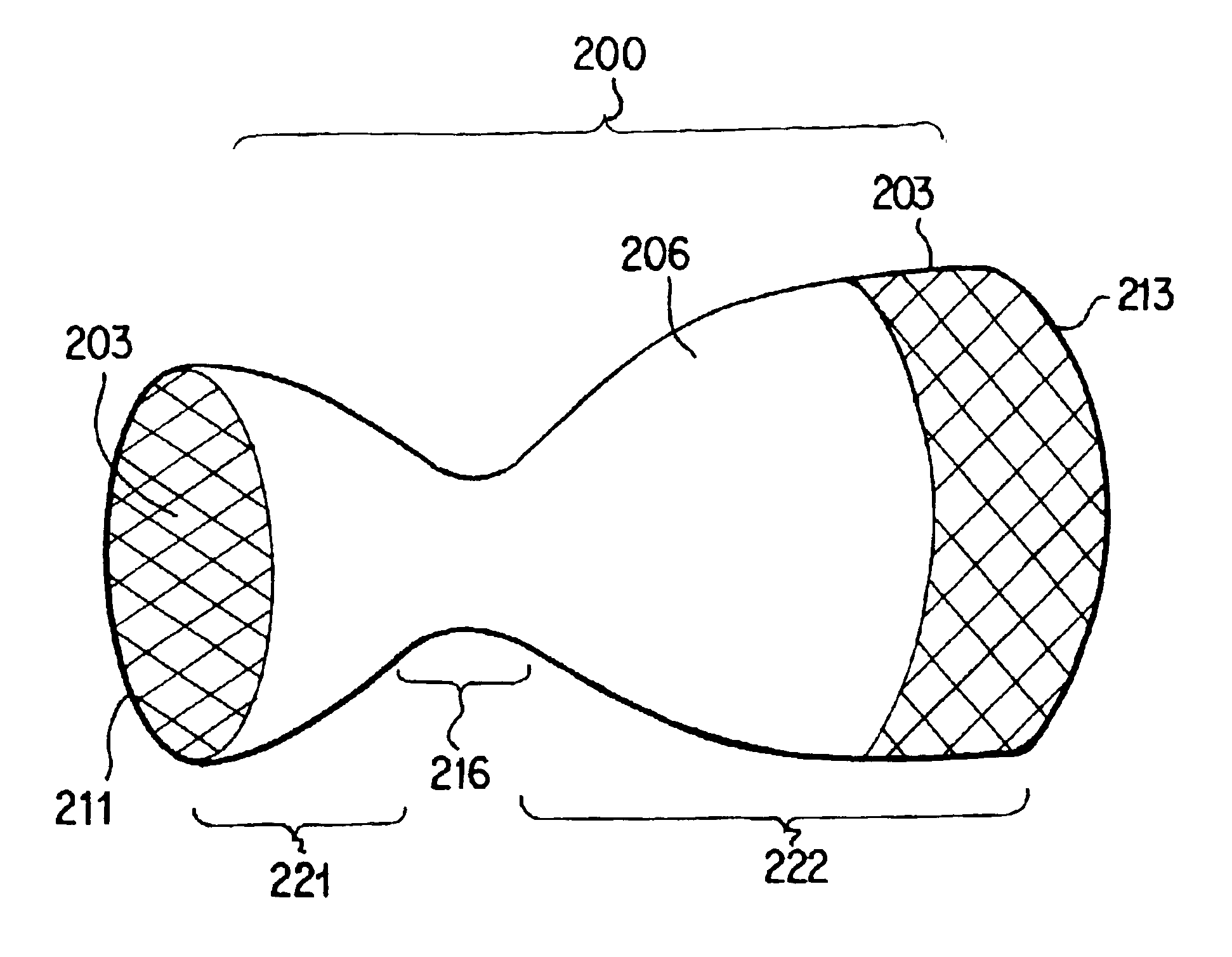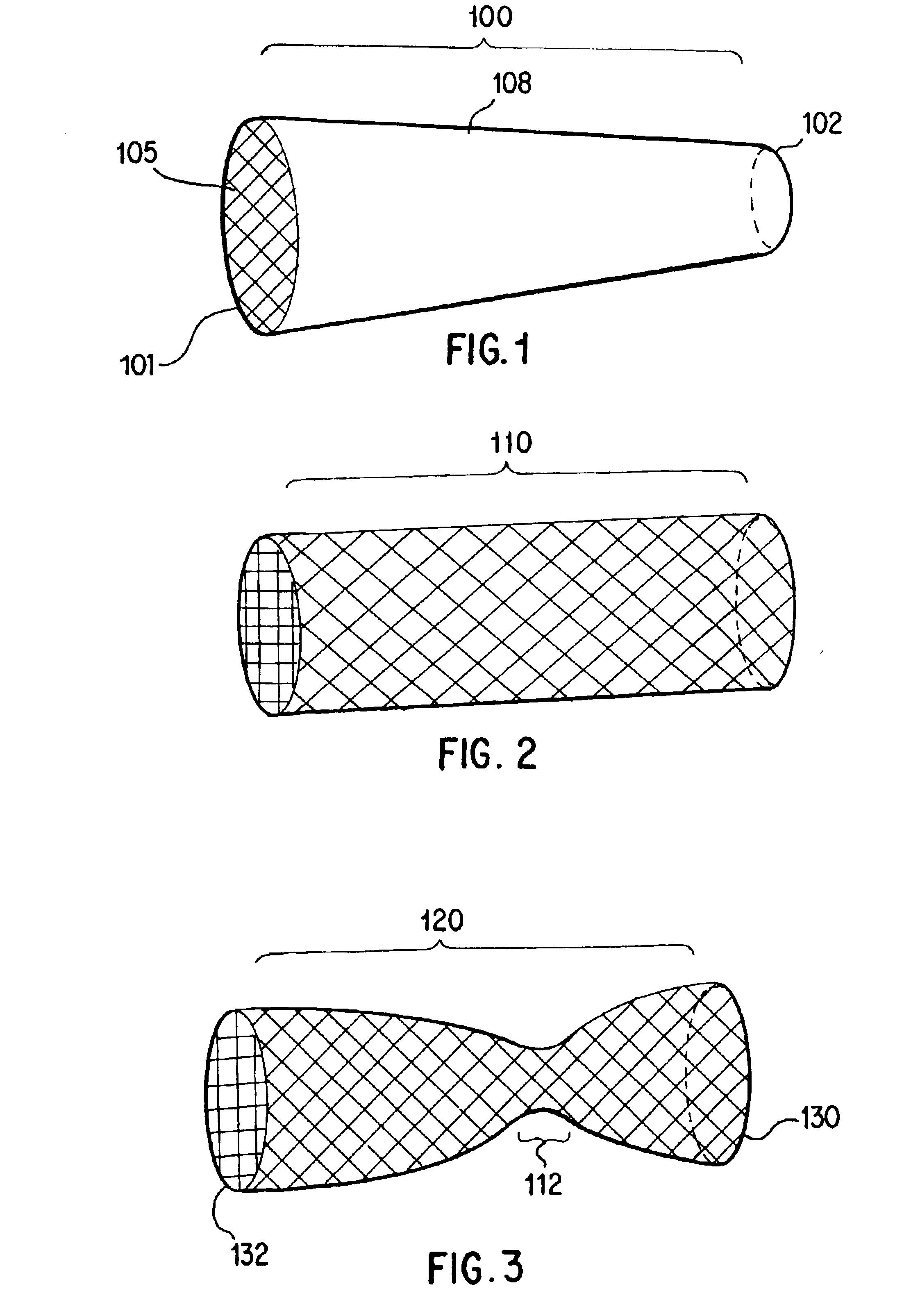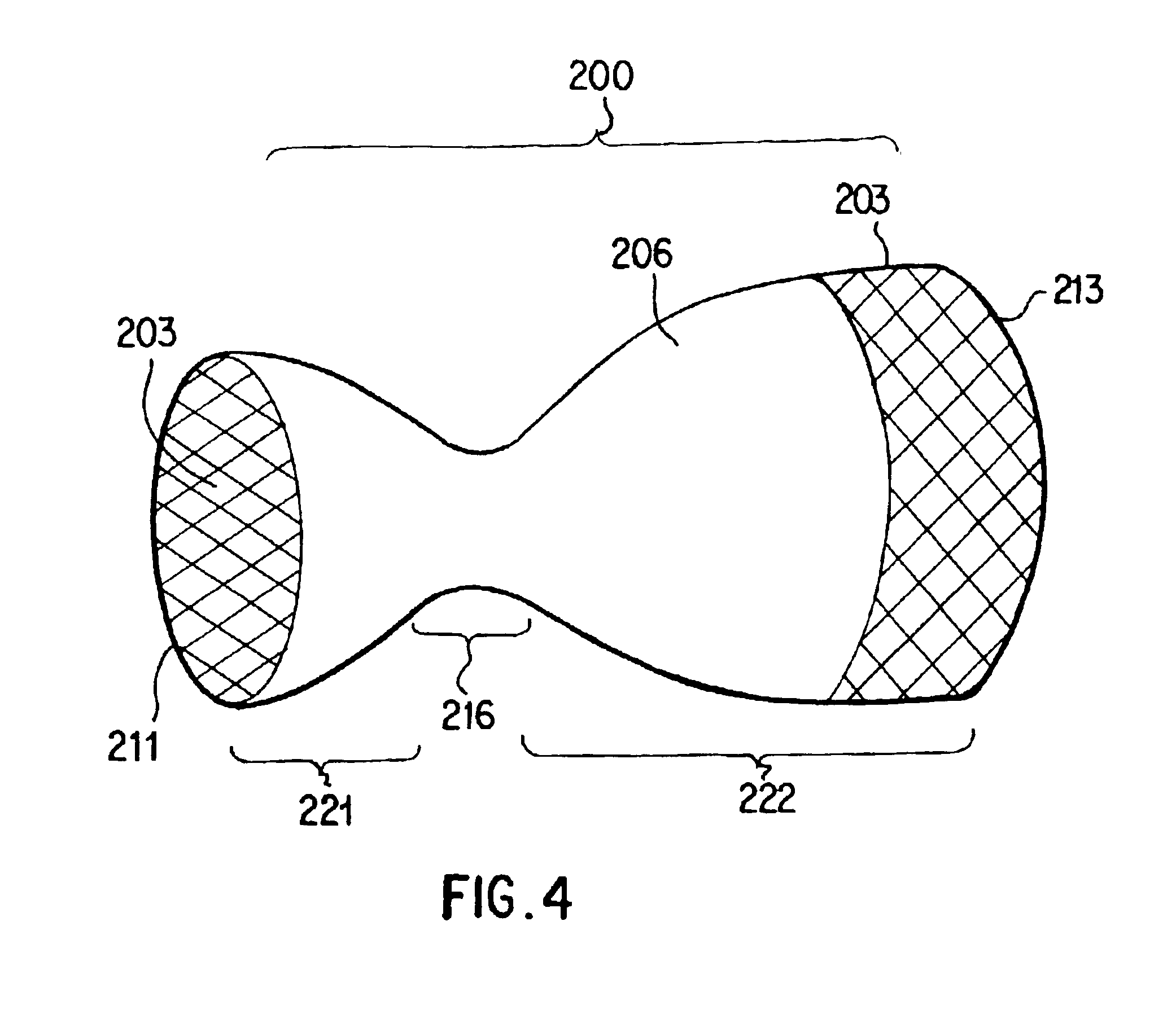Two-piece stent combination for percutaneous arterialization of the coronary sinus and retrograde perfusion of the myocardium
a technology of myocardium and coronary sinus, which is applied in the field of two-piece stent combination for percutaneous arterialization of the coronary sinus and retrograde perfusion of the myocardium, can solve the problems of requiring invasive surgery, introducing devices, and not teaching how to construct such valves, and achieve the effect of convenient positioning of stents
- Summary
- Abstract
- Description
- Claims
- Application Information
AI Technical Summary
Benefits of technology
Problems solved by technology
Method used
Image
Examples
Embodiment Construction
[0023]The two-piece stent combination of the present invention has an arterializing stent and a restricting covered stent. In one embodiment, the arterializing stent and the restricting covered stent are placed in their desired positions and are not connected. In another embodiment, however, the arterializing stent may be connected to the restricting covered stent, e.g., by a wire.
[0024]A preferred embodiment of the arterializing stent 100 according to the present invention is illustrated in FIG. 1. The arterializing stent 100 generally has an underlying arterilizing stent 105 and an optional covering 108. The arterializing stent 100 has a leading end 102, which is placed in the left ventricle, and a trailing end 101, which is placed in the coronary sinus. The arterializing stent 100 generally has a tubular shape with a passageway therethrough.
[0025]Referring to FIGS. 1-3, the shape of the arterializing stent may be one of a variety of shapes. In one embodiment, as seen in FIG. 1, i...
PUM
 Login to View More
Login to View More Abstract
Description
Claims
Application Information
 Login to View More
Login to View More - R&D
- Intellectual Property
- Life Sciences
- Materials
- Tech Scout
- Unparalleled Data Quality
- Higher Quality Content
- 60% Fewer Hallucinations
Browse by: Latest US Patents, China's latest patents, Technical Efficacy Thesaurus, Application Domain, Technology Topic, Popular Technical Reports.
© 2025 PatSnap. All rights reserved.Legal|Privacy policy|Modern Slavery Act Transparency Statement|Sitemap|About US| Contact US: help@patsnap.com



